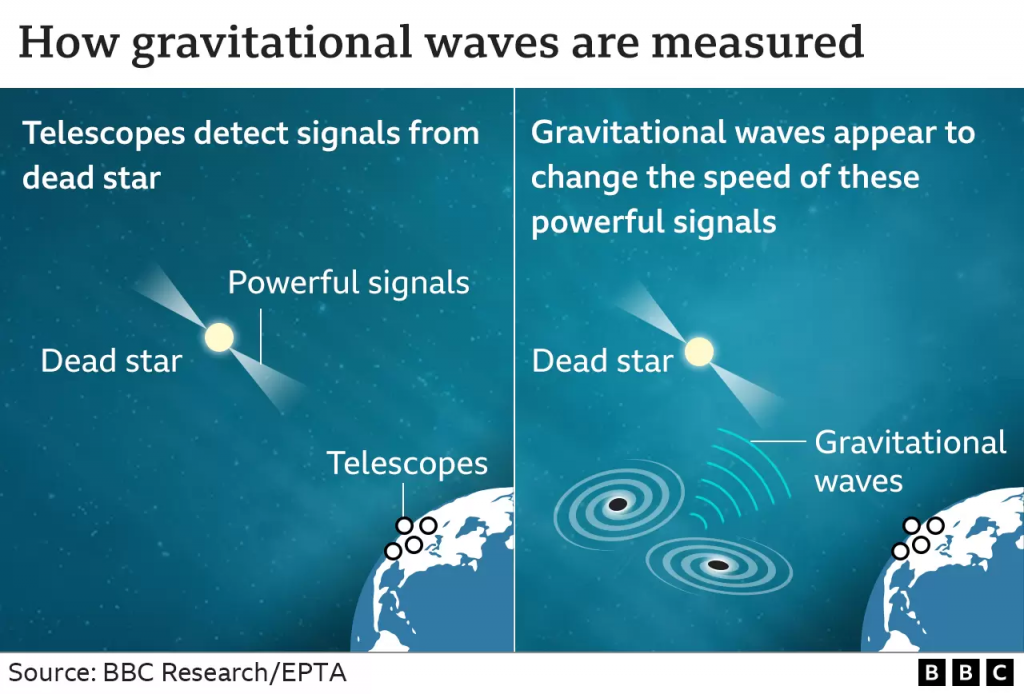
On June 28th, groups of scientists from across the world picked up shock waves from the orbit of two supermassive black holes as the two begin to merge. The North American, European, Indian, Chinese and Australian teams used the steadily emitted radio waves from neutron stars known as pulsars to identify this stretching and compression of the fabric of space-time.
During the last 15 years, radio astronomers from the different teams have carefully monitored the pulses from a total of around 100 rapidly spinning pulsars (Ref. 2). Pulsars rotate at a fixed speed and emit radio waves at a constant rate. This means that the waves will reach the Earth at fixed intervals. However, this was not true on the 28th June. These waves were distorted by the ripples caused by the supermassive black holes.

The newly found gravitational waves are different to the ones detected to date. Those earlier waves are caused by much smaller, star-sized black holes crashing into each other (Ref. 1).
Scientists believe that there are gigantic black holes at the centre of every galaxy. “We know supermassive black holes are there, we just don’t know how they got there. One possibility is that smaller black holes merge, but there has been little observational evidence for this.But with these new observations we could see such a merger for the first time. And that directly will tell us how the most massive black holes form,” said Dr Rebecca Bowler, of Manchester University, to the BBC (Ref. 1).
References:
Ref.1 – BBC News
Ref.2 – LIVEScience

